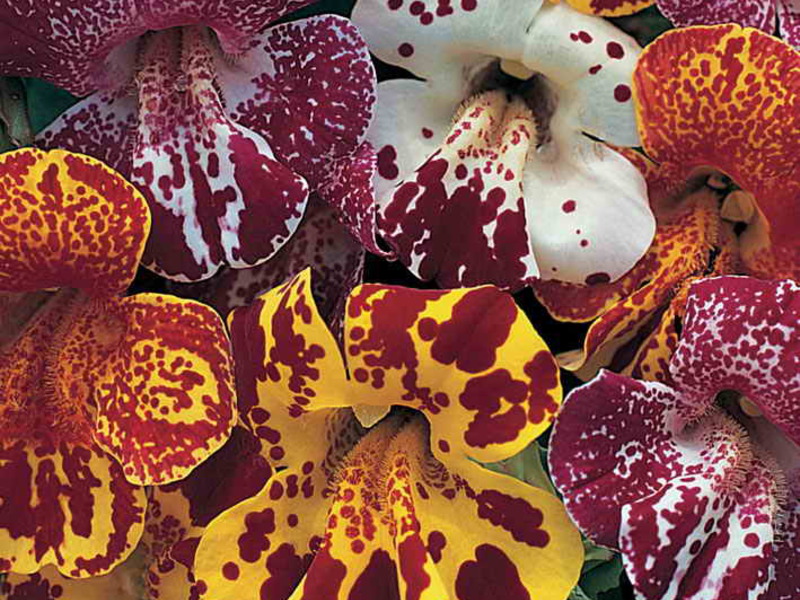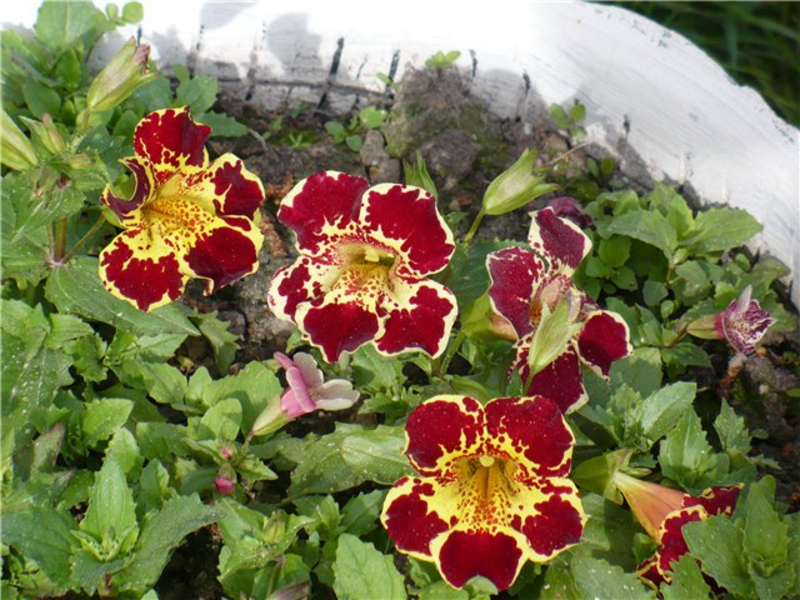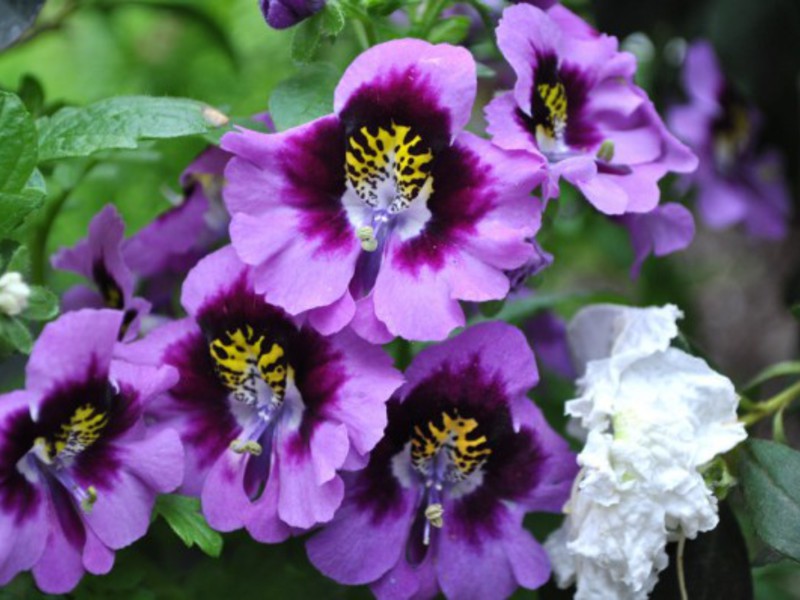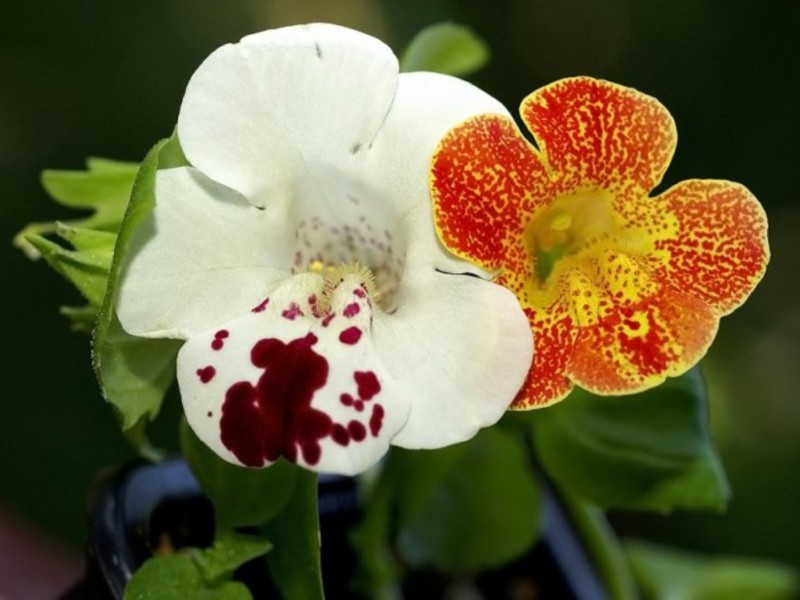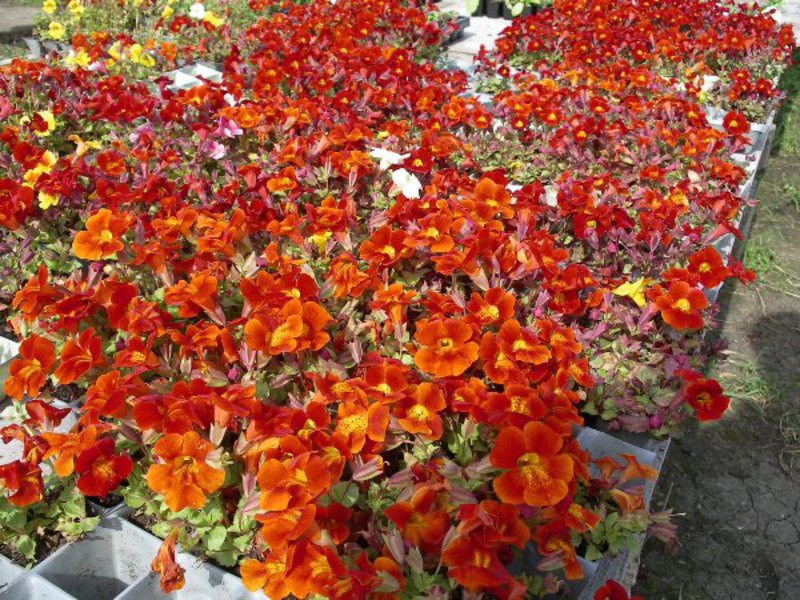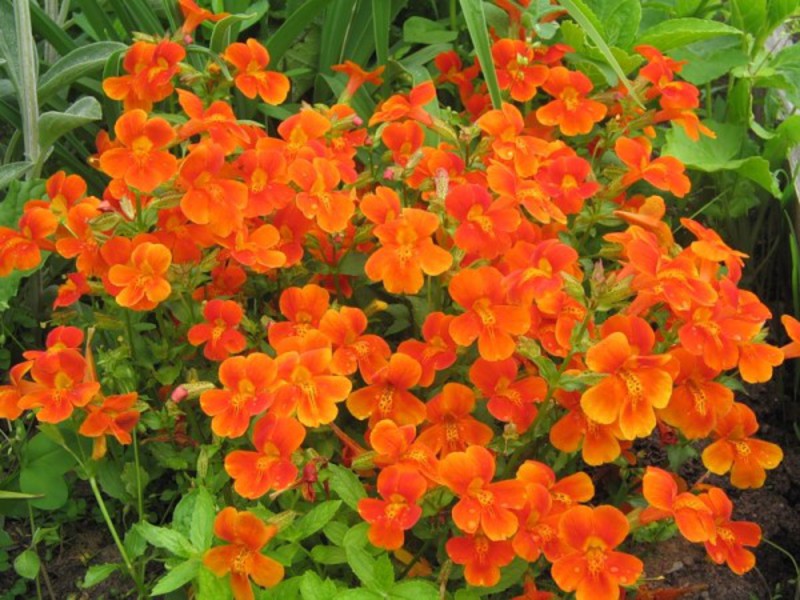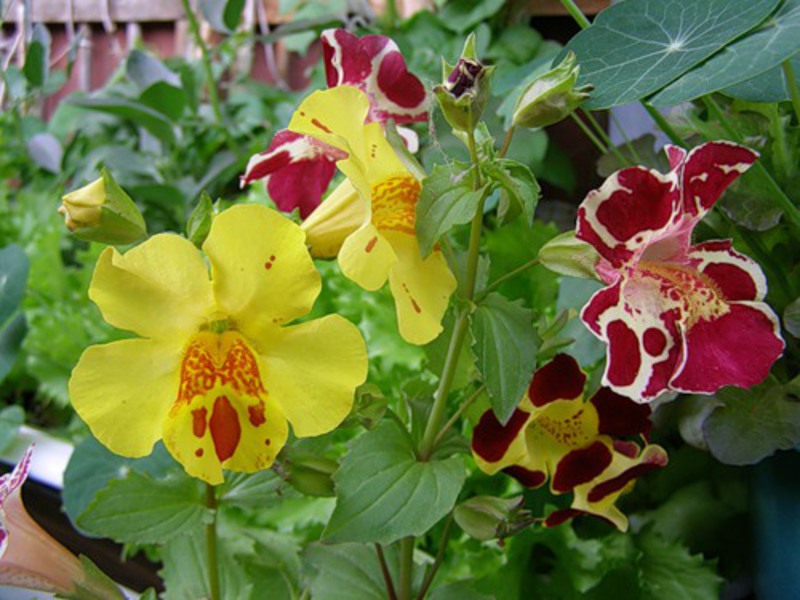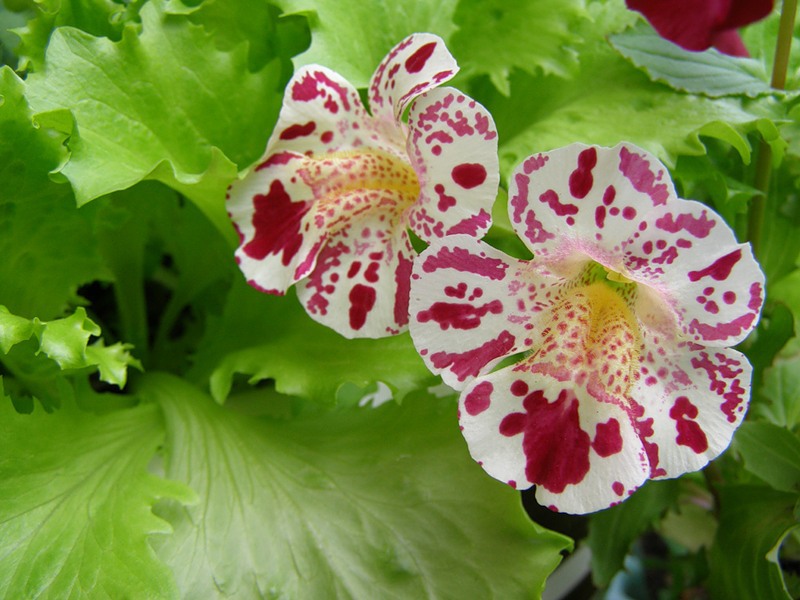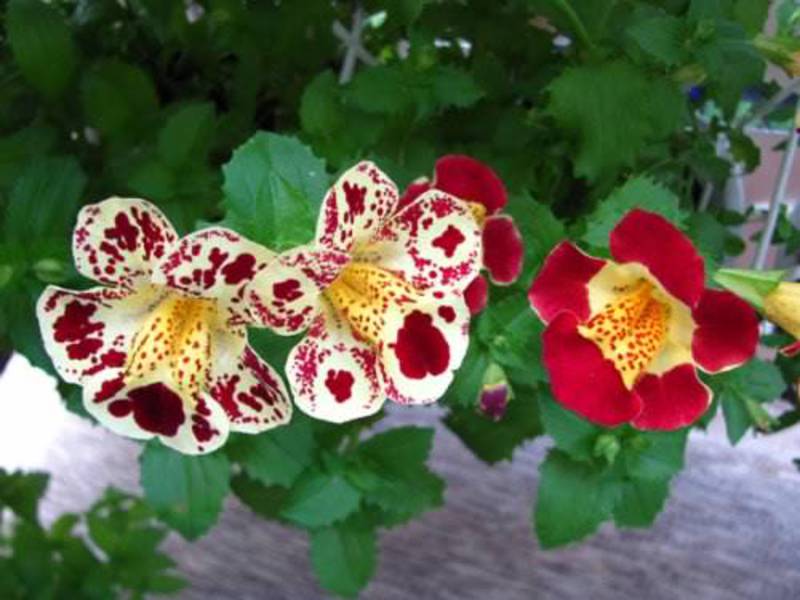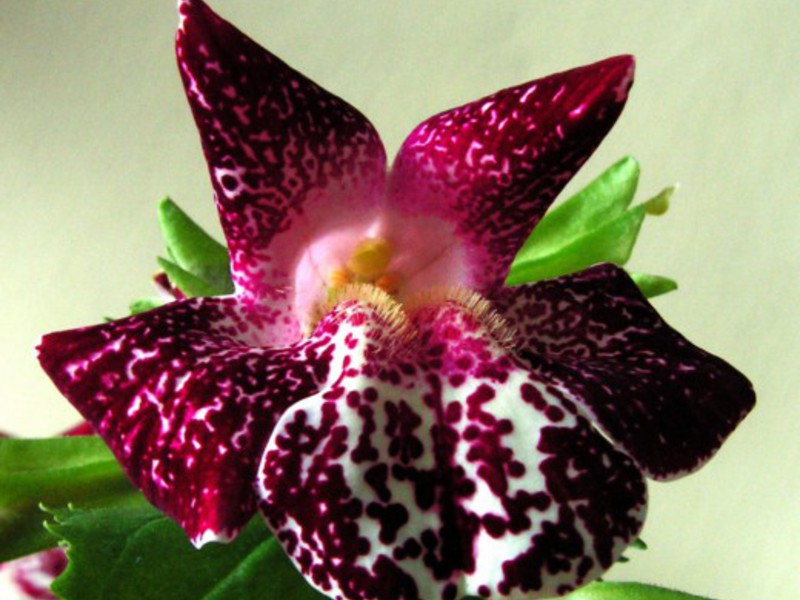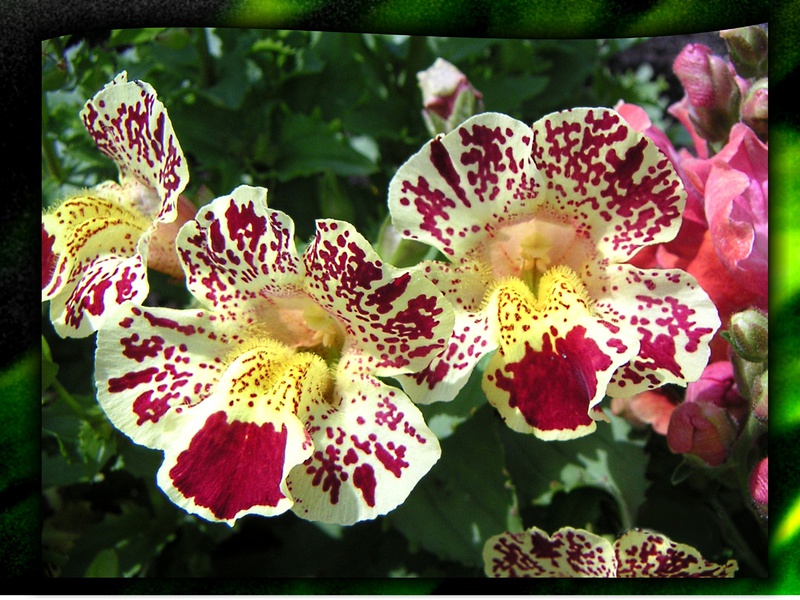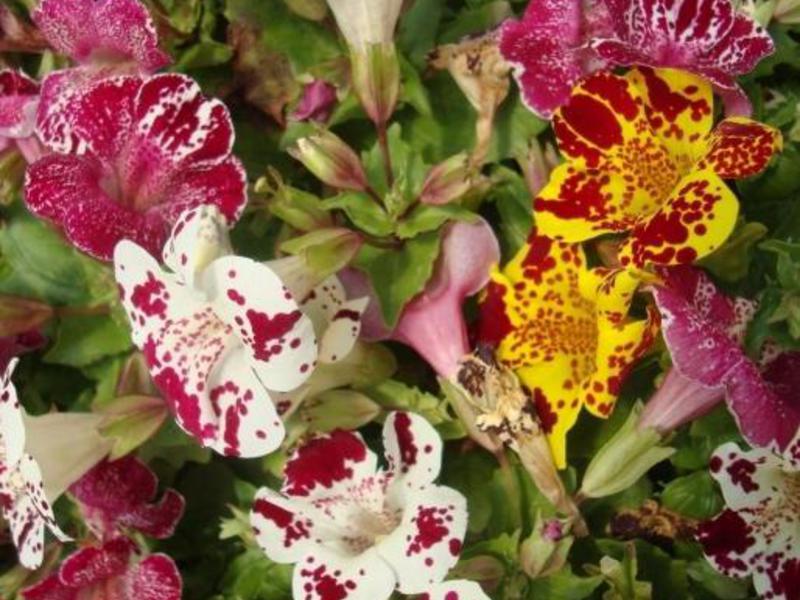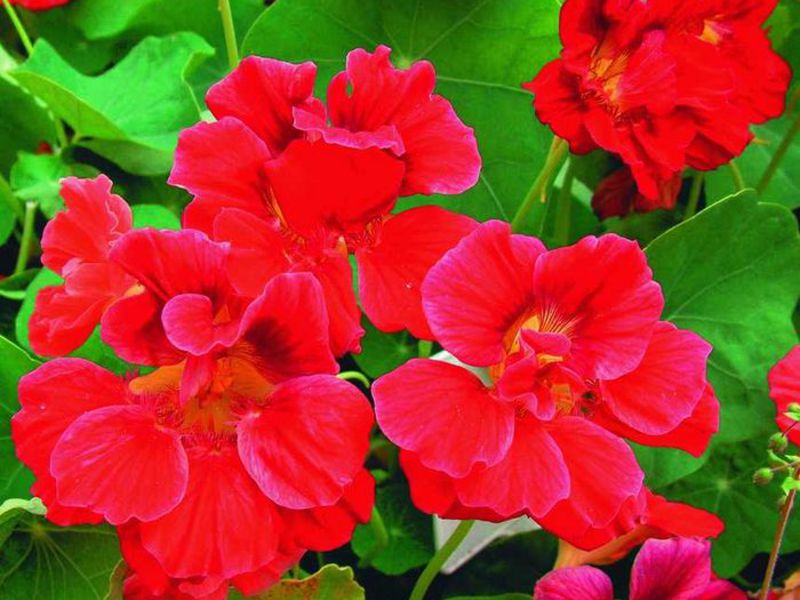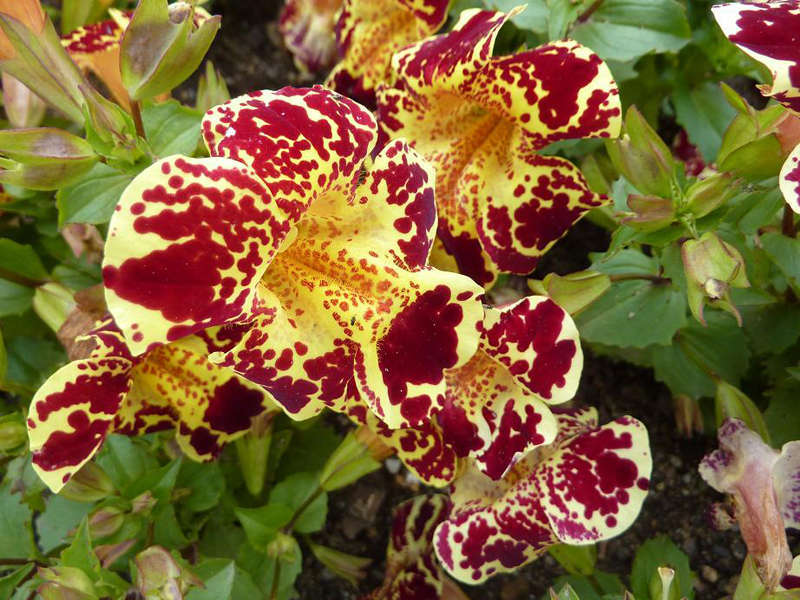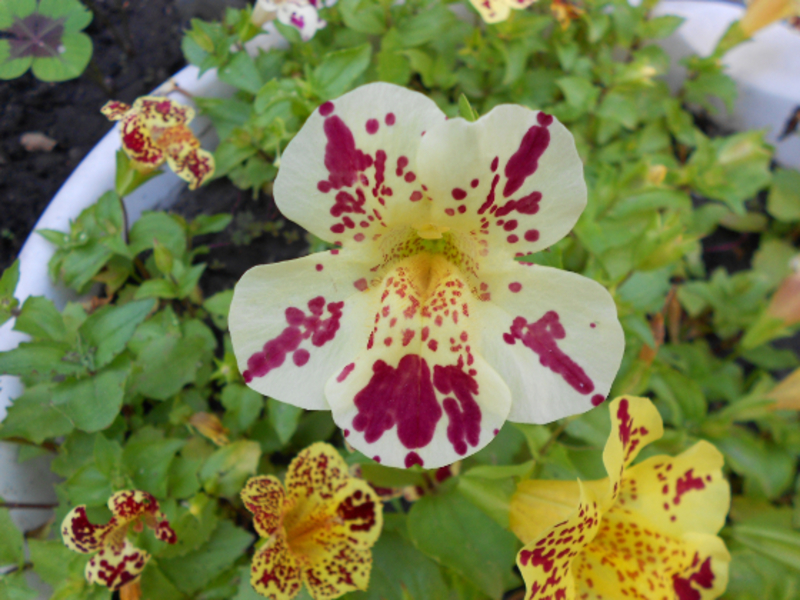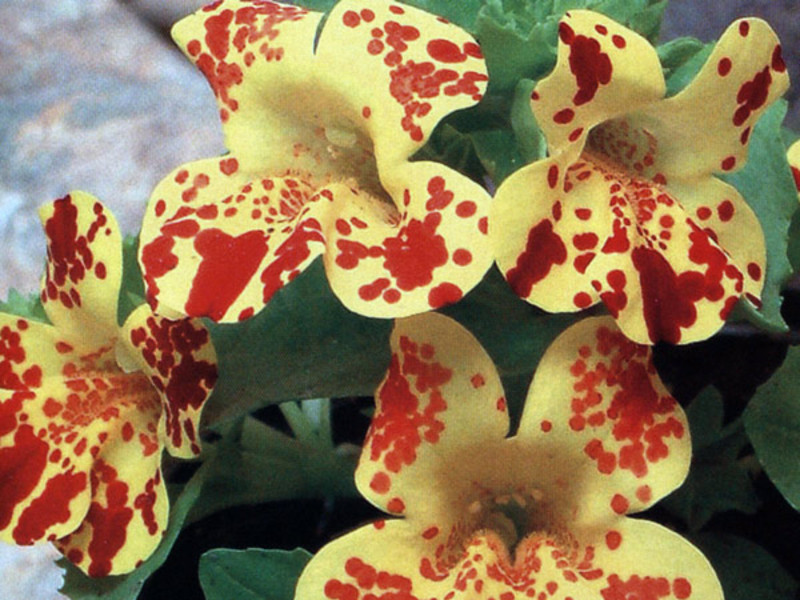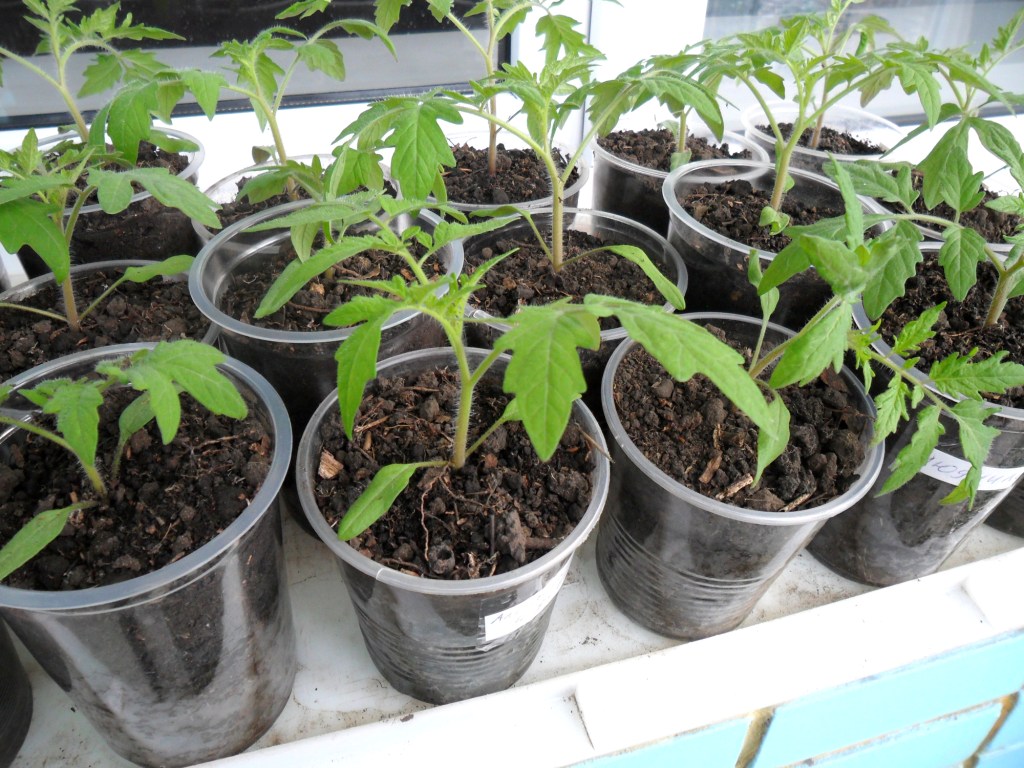For small flower beds in garden plots and decorating balconies, the creeping plant mimulus is the best fit. Its advantage is long-term flowering with original flowers of bright colors. Unusual and mysterious Mimulus flowers are somewhat similar to orchids. The cultivation of this plant is a rather laborious process, but it brings positive results in the form of beautifully decorated flower beds and balconies.
Content
Description, varieties and photos of mimulus
Plant name translated means magician, artist... Apparently, this is due to the spotty, highly variable color of flowers. In their shape, they resemble the muzzle of a monkey, therefore in their homeland they are called monkey flowers. In our country, mimulus are known as lipsticks.
These herbaceous perennials or annuals grow in the humid, swampy areas of western North America. Some species are found in New Zealand, Australia, East Asia, Chile. They bloom from April to July, experiencing drought at rest. With the onset of the rainy season, the lips come to life again.
On average, mimulus reach a height of 10 to 60 cm. Some representatives of the genus are half-shrubs that grow up to two meters. Broad-lanceolate, opposite leaves with sharp serrations grow on their creeping or erect stems. Loose racemose inflorescences consist of original flowers of various colors. Corolla tubular at the base splits into two lips... The lower three-lumen lip is protruding forward, and the upper one consists of two lobes. The fruit of the lipstick is a bipartite seed capsule.
Types of mimulus
For florists of greatest interest are the following types of lipsticks:
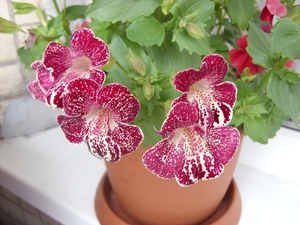 Mimulus tiger is a short plant and is the most popular annual species. Bushes up to 25 cm high are distinguished by racemose inflorescences with variegated flowers of all kinds of colors. Hybrid species bloom from late May to late July.
Mimulus tiger is a short plant and is the most popular annual species. Bushes up to 25 cm high are distinguished by racemose inflorescences with variegated flowers of all kinds of colors. Hybrid species bloom from late May to late July.- Tricolor lip is a herbaceous plant 14 cm high. Its slightly pubescent opposite leaves are oval in shape and up to 4.5 cm long. The pharynx of the flower has a pink color and yellow and white spots in the throat. Each petal has maroon spots at the base.
- Mimulus muscat is a herb that secretes mucus with a muscat smell. All its parts have a fleecy structure. A bush with erect or creeping stems grows up to 30 cm.Yellow flowers reach 2.5 cm in diameter.
- The copper-red lipstick is grown as an annual. The plant with creeping stems is 15 cm long and has copper-colored flowers. They can be yellow, orange or red in color.
- Mimulus orange is a very thermophilic plant. In length, its erect stems can reach 1.2 m. They have the ability to bend beautifully, which gives the plant a very decorative look. The tubular flowers consist of five broad petals, which can be white to red in color. However, the most common color is light orange.Flowering begins in May and lasts until mid-September.
- The speckled lip can be both an annual and a perennial plant. It is distinguished by creeping or straight stems, the length of which can be from 10-80 cm. The oval or rounded leaves of the plant are roughly lobed or serrated. The inflorescences consist of disproportionately large tubular flowers of bright yellow color. The lower lip of each flower is covered with red to brown spots. In garden plots, the plant is grown as an annual.
Growing mimulus from seeds
Seeds of different types of this amazing flower can be bought in the store or on your own harvest after full ripeness... When growing a lipstick from seeds, the following recommendations must be observed:
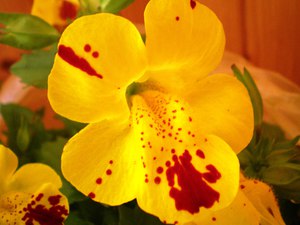 At home, sowing is done from late February to early April.
At home, sowing is done from late February to early April.- The seedling boxes are filled with slightly acidic soil, on the surface of which seeds are sown.
- From above, the soil and seeds from the spray are moistened with water at room temperature and covered with polyethylene or glass. It turns out a mini greenhouse, which must be placed in a warm place with an air temperature of at least + 18C.
- Seed care is about keeping the soil moist.
- So that the soil under the film does not begin to grow moldy, it is recommended to ventilate it every day for half an hour, removing the shelter for this.
- As soon as the first seedlings appear (after 3-4 days), the containers with the seedlings are placed in a well-lit and cooler place. The air temperature should be within 10-12C.
- When 2-3 true leaves appear, the seedlings dive into separate containers. The use of peat pots is recommended, from which transplanting into open ground for plants is less painful.
- Cut young plants should be kept moist in a room with a low, stable temperature.
- Young plants need to be fed twice with a weak solution of potassium fertilizer.
Subject to all recommendations, the strengthened and grown mimulus bushes in mid-May will be ready to land in open ground.
Lips grown at home from seeds will bloom at the end of May, and will delight with their flowers until frost, resting in the hot summer months.
Growing mimulus in the open field
You can plant a lipstick in well-lit areas and in partial shade. It should be borne in mind that direct sunlight and heat slow down the growth and flowering of the plant.
Landing
Mimulus love loamy soils with the addition of peat and humus. Digging is done immediately before planting seedlings. The distance between the bushes should be 20 to 30 cm.
If a balcony is formed with lipsticks, then planting should be done in boxes or potsfilled with specially prepared earthen mixture. To do this, mixes:
- leaf land - 2 parts;
- peat - 1 part;
- humus - 3 parts;
- some turf and sand.
The planted plants are well watered and pinched. In this case, the bushes will become more lush.
Care features
 Mimulus need abundant watering... Especially carefully monitor soil moisture during the hot summer months. However, constant waterlogging of the soil can provoke the development of various diseases. To do this, it is recommended to monitor the condition of the bushes, and when small holes appear on the leaves, reduce the intensity of watering.
Mimulus need abundant watering... Especially carefully monitor soil moisture during the hot summer months. However, constant waterlogging of the soil can provoke the development of various diseases. To do this, it is recommended to monitor the condition of the bushes, and when small holes appear on the leaves, reduce the intensity of watering.
About two weeks after planting the lips, you must start feed with special mineral fertilizers for blooming flowers. The solution is prepared in accordance with the instructions attached to them. Top dressing is done every three weeks.
When caring for mimulus, pruning of bushes is necessary between flowering. Lips bloom twice a season - in spring and autumn, and in the hottest summer months they rest.It was during this period that the bushes are cut short and watered with a solution of complex mineral fertilizers. Plants will recover and bloom again rather quickly. When caring for mimulus, do not forget about regular weed removal and periodic loosening of the soil around the plant.
Mimulus grown in containers, as soon as the roots fill the entire container, must be carefully transplanted. For this, a more spacious pot or box is selected, into which the plants are transferred along with an earthen clod on the roots.
To make the bushes look beautiful and bloom for a long time, when caring for them, it is required periodically cut off dried stems and remove faded inflorescences.
Annual sponges winter well in cool rooms with good lighting. To do this, in the fall they are dug up, seated in small containers and cut off.
Diseases and pests
 The positive quality of mimulus is that they are very resistant to various pests and diseases. However, sponges can still be attacked by whiteflies or aphids. If these pests are found on the leaves or stems, the plants must be treated with insecticidal agents.
The positive quality of mimulus is that they are very resistant to various pests and diseases. However, sponges can still be attacked by whiteflies or aphids. If these pests are found on the leaves or stems, the plants must be treated with insecticidal agents.
In a hot period of time, a bush may be affected by gray mold... Any methods of combating this disease are practically ineffective, so the plant is immediately destroyed. Otherwise, the viral disease will spread and kill other plants.
Often, young shrubs suffer from powdery mildew and black leg. Get rid of them with systemic fungicides.
To prevent the lips from getting sick, during the care you need to try not to overmoisten the soil, and their leaves and stems should be periodically examined. Soil around plants it is recommended to cover with mulch.
Mimulus similar to orchids can be used to decorate a small flower bed or rabatka in an original way. With the help of sponges planted in boxes, tubs or hanging pots, balconies, loggias and terraces are originally designed. Water-loving plants are used to decorate reservoirs and swampy areas.
